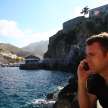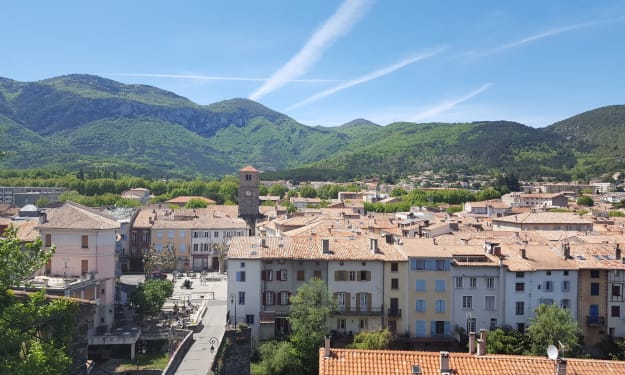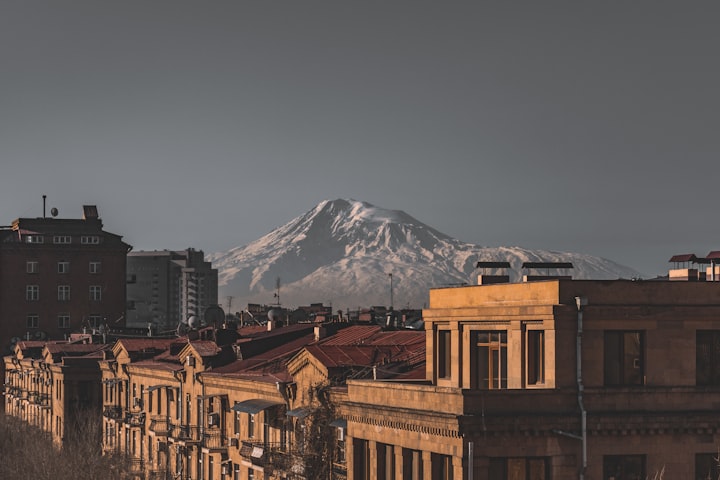Anastylosis
Cities, like people, are built from pieces of the past.

It’s not that I didn’t want to go to Warsaw. It’s just that I’d heard Krakow was better. But we go where the budget airlines will take us. We go where we can afford to go. And any new place has its appeal. I generally find something to like about every European city I’ve visited. So we went to Warsaw anyhow.
You can see the ravages of war across Europe, from the bullet holes in the walls of the church in Marseille to the bodies of dead Nazis still turning up in Russian fields. My home town was never occupied, but it still bears the scars of brutal bombing raids. But few cities suffered what Warsaw did. The war in the West, for all its horror, was positively genteel compared to the Eastern Front that rolled through Poland. In 1944, with the German dream of Lebensraum disappearing under an unstoppable tide of Red Army soldiers, the Polish resistance saw their chance to free themselves from Nazi rule. For two months, the men and women of the Resistance fought in the ruins of their shattered city with a bravery that beggars believe. But all the courage in the world wasn’t enough to save the city. The uprising was crushed, and the Nazi reprisal was merciless. Warsaw was obliterated. Systematically, methodically, sadistically, the Nazis demolished the city building by building. A metropolis of 1.3 million became a ghostly ruin where less than a thousand people clung to life amid the rubble and the stench of death.
So far, so horrifying. But the remarkable thing about Warsaw is its resurrection. The Old Town was painstakingly recreated, just as it was before the war, so now you can wander the cobbled streets and admire the historic architecture, and forget that these things ever happened. Only an informed eye might notice that these historic buildings are just a little too well-preserved. A little too intact.
It’s called anastylosis, the act of rebuilding the ruins of the past, using the original materials wherever possible. It’s something I think about a lot. The old conundrum of the Ship of Theseus. The buildings of Warsaw’s Old Town are mostly younger than my father is. Does that make them somehow less authentic? Is replacing one brick at a time better than doing it all at once, and if so, why? The Colosseum in Rome is two thousand years old, but most of what you see now is far younger than that. Reconstructed. Restored. Fake, in a sense.
I think about this in Warsaw. I think about it in Rome. I think about it in Niaux cave in the south of France, where the paintings on the walls are tens of thousands of years old. At Chauvet, at Lascaux, the more famous painted caves, they’ve built an exact replica of the cave system for tourists to visit. The original caves are closed, the prehistoric paintings in danger of being polluted by the breath of the people who come to see them.
I think of this every time a cut heals. I think of how every cell in my body replaces itself with an imperfect copy. Even our scars are merely copies of the original wound, and the person you’ll be in ten years will have none of the parts you have now. We’re not the real thing. We’re copies of ourselves.
Warsaw is still Warsaw, despite everything its been through. The reconstructed Old Town, with its colorful buildings and atmospheric alleys, is as charming as any in Europe. And it remains shockingly affordable. A 500ml bottle of beer cost 50 cents in the grocery store. A big meal for two, with starter and dessert, and a couple of drinks, can be had for $25-30. Warsaw’s not as popular as Krakow is with tourists, but it’s a great place for a budget-minded traveler to visit. It may be a reconstruction, but it’s as real and authentic as any other city. And it’s just as beautiful, too. Maybe even more so, once you know what it took to make it that way. The city stands as a triumph of beauty against all the odds. A monument to the human capacity for regeneration. Maybe the bravery and tenacity and resilience of its people is the most beautiful thing of all.
About the Creator
Ryan Frawley
Towers, Temples, Palaces: Essays From Europe out now!
Novelist, entomologist and cat owner. Ryan Frawley is the author of many articles and stories and one novel, Scar, available from online bookstores everywhere.







Comments
There are no comments for this story
Be the first to respond and start the conversation.